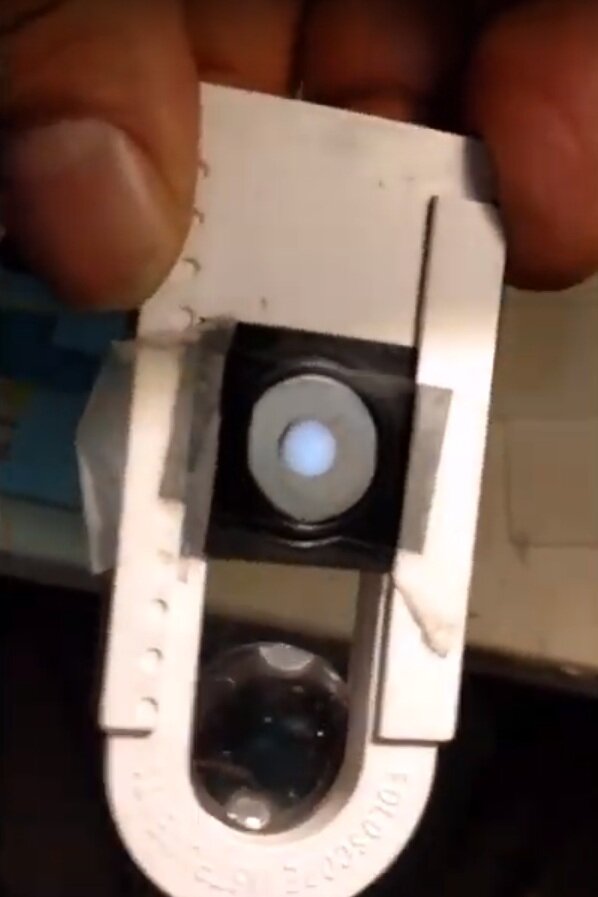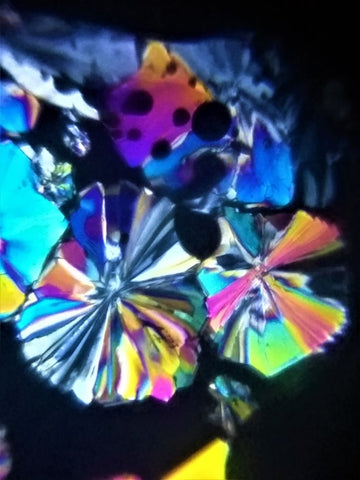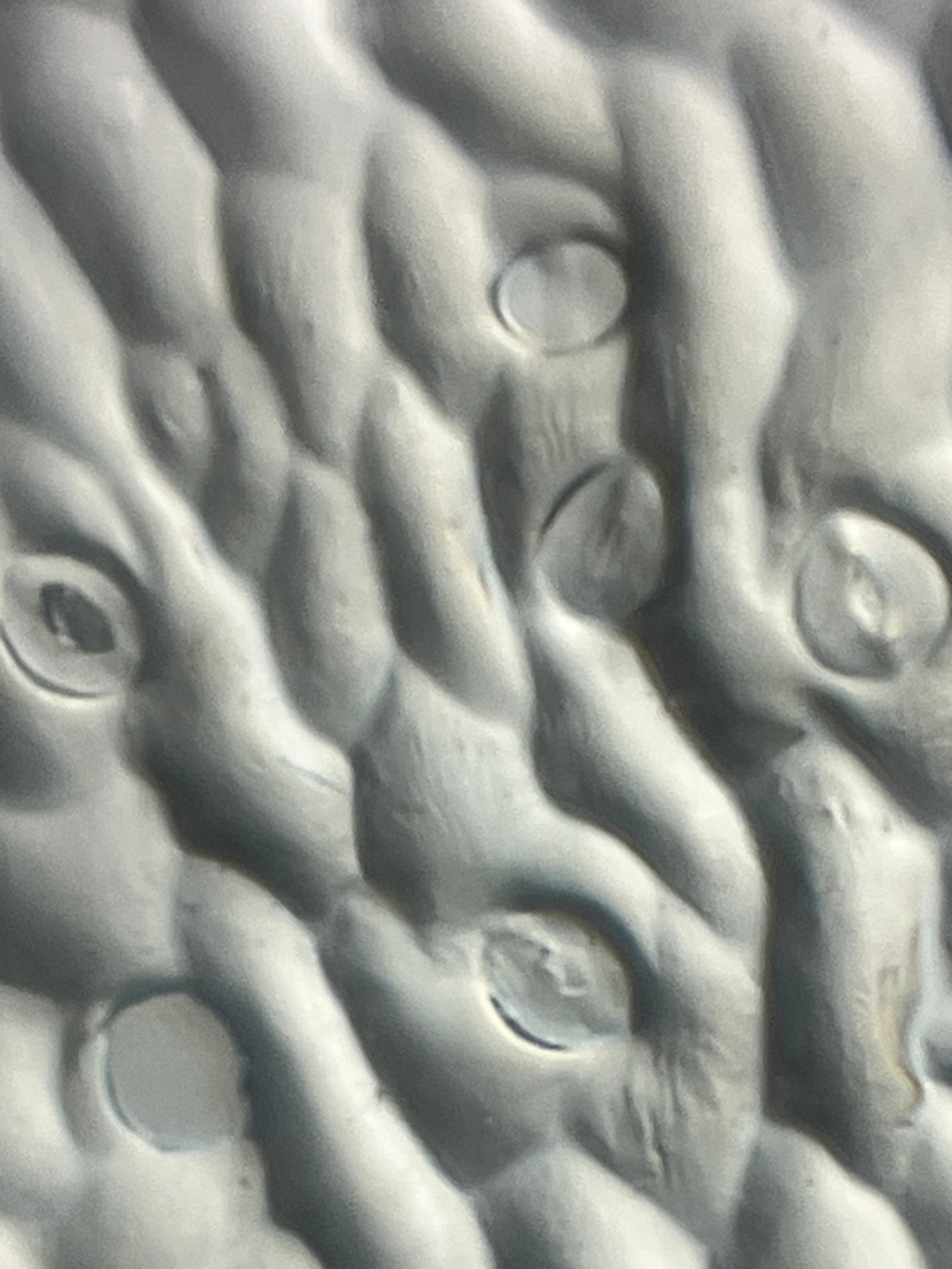What is Polarization?
Before getting into this techniques, it is helpful to think about what polarization is exactly, how it works, and what applications this technique is useful for.
This excerpt from https://www.explainthatstuff.com/microscopes.html describes polarization nicely, as well as the basics for how microscopes work in even broader terms (follow that link if you’re curious to know more).
A basic optical microscope uses one or more lenses to bend the light bouncing off (or traveling through) a specimen… [The Foldscope uses a single lens].
Ordinary light consists of waves that vibrate in every direction. If we pass light like this through a grid-like filter, so the waves can vibrate in only one direction (plane), what we get is called polarized light (or, sometimes, plane-polarized light).
If you shine polarized light through an ordinary piece of glass, it bends in the usual way through the process of refraction (or refringence, as it was once known). We can compare the amount by which light bends in different materials using a measurement called the refractive index.
So far so good. But other solid materials, including ice, calcium carbonate, quartz, plastics (such as cellophane), stressed plastics, and various other crystals, change light in different ways when it travels through them in different directions. If you pass light through these materials, something much more interesting happens: it splits into two separate waves that bend by different amounts. In other words, unlike glass (which has a single refractive index), these materials have two refractive indices; that's why this effect is called birefringence (in effect, double refraction). If you collect the two waves coming out of a birefringent crystal and pass them through another polarizing filter, called an analyzer, which is set up at right angles to the first polarizing filter, they recombine, interfere with one another, and produce colorful patterns that change as you rotate the specimen.
Polarizing microscopes are based on this idea: they're much like ordinary optical microscopes but with polarizing filters fitted above and below the specimen. We can use them to study birefringence and other properties of materials, which can help us identify minerals or figure out important things about their inner structure. Polarizing microscopes have useful applications in:
-
Geology—for example, studying the mineral components of a particular rock.
-
Crystallography—for identifying crystals in everything from forensic science to art conservation.
-
Materials science—such as studying the stress on certain mechanical components using photoelasticity.
-
Medicine—including urinalysis (diagnosing medical problems from the substances in someone's urine).
How it Works
To try polarization with a Foldscope, all you need are polarization filters, which can be purchased online or even re-purposed from 3D glasses. We are lucky enough to already have a tutorial video for this technique made by a super-user, Lakshminarayan Iyer!
Numbered below are the simple steps you to follow to polarize the light hitting your sample.
1. Place one polarization filter between the light source and the sample.
You can do this by taping the filter directly over the light source, as shown in the photo on the right, where the filter is taped to a LED light module.
If you plan on using natural light or a lamp as your light source, tape the polarizing filter to the back of the Foldscope over the area where light enters.

2. Place another polarization filter between the lens and the eye/camera.
Tape the filter onto the front of the Foldscope directly over the lens.

3. View the sample. Try rotating one of the filters as you view and observe how the interactions change.
See Laks’ tutorial video below to watch these steps in action…
See the full post here.
Here is a gallery of brilliant polarization images with Foldscope, taken by Mitali Patil. These images are all from a series of incredible posts (links below) in which Mitali explores a variety of samples with this technique.

















Mitali’s Polarization Posts:
References
-
Woodford, Chris. (2008/2018) Microscopes. Retrieved from https://www.explainthatstuff.com/microscopes.html.



